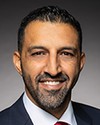Thank you, Mr. Chair.
First of all, I'd like to point out that our study today is coming at a very noteworthy time for Quebec. As we speak, the banks of several rivers in Quebec are overflowing, especially the northern bank of the St. Lawrence River. Spring floods used to be seen as unusual, but have now become the norm. Each year, the question is not whether there will be a disaster, but where that disaster will strike.
I would like to express my strong solidarity with the people of Sainte‑Émélie‑de‑l'Énergie and Baie‑Saint‑Paul, as well as all other Quebeckers affected by the flooding.
In the past, there have been natural disasters in the Outaouais region, in Saguenay—Lac‑Saint‑Jean, in Saint‑Jean‑sur‑Richelieu, in Montérégie, and in Sainte‑Marthe‑sur‑le‑Lac. The situation only seems to be getting worse. It's sad, because I believe we had the ability to band together to prevent such catastrophes. We all know it, and we can no longer deny it: the cause of these natural disasters is climate change.
If Canada had been more proactive in fighting climate change, we would not collectively be experiencing all of this devastation. Unfortunately, Canada did not move in the right direction and is still highly dependent on oil. Today, there is a public awakening, and everyone is opening their eyes to see that Canada did not choose the right path. The whole planet also needs to take the right path.
I will start by putting a question to Mr. Gemmel, from the Federation of Canadian Municipalities.
The federal government controls less than 3% of total infrastructure in the country. The vast majority of infrastructure is owned by either municipalities or provincial governments.
Given that, how can the federal government play a leadership role—despite owning just 2% to 3% of infrastructure?




